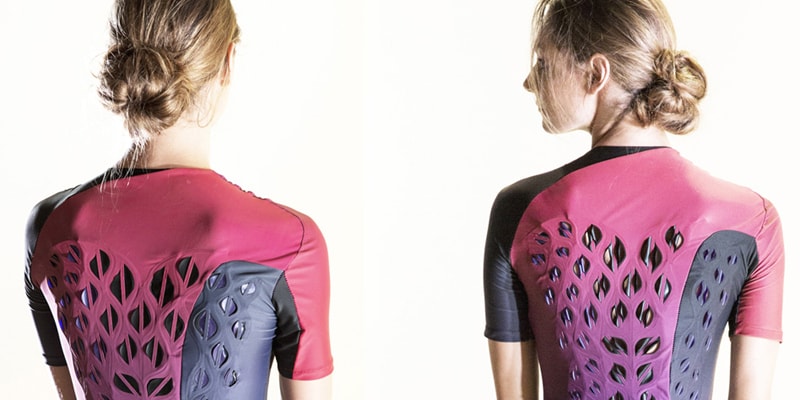
MIT researchers have designed a breathable workout suit which features ventilating flaps that open and close in response to body heat and sweat. The thumbnail-to-finger-sized flaps are lined with live microbial cells that shrink and expand in response to changes in humidity. The team has also fashioned a running shoe with an inner layer of similar cell-lined flaps.
The cells act as tiny sensors and actuators, driving the flaps to open up and expand when an athlete works up a sweat, and pulling them closed when the body has cooled off.
The microbial cells that have been used are proven to be safe to touch and consume and with the new genetic engineering tools available today, the cells can be prepared quickly and in vast quantities, to express multiple functionalities in addition to moisture response.
“We can combine our cells with genetic tools to introduce other functionalities into these living cells. We use fluorescence as an example, and this can let people know you are running in the dark. In the future we can combine odour-releasing functionalities through genetic engineering. So maybe after going to the gym, the shirt can release a nice-smelling odour,” says Wen Wang, the paper’s lead author and a former Research Scientist in MIT’s Media Lab And Department of Chemical Engineering.
The researchers worked the biofabric into a wearable garment, designing a running suit with cell-lined latex flaps patterned across the suit’s back. They tailored the size of each flap, as well as the degree to which they open, based on previously published maps of where the body produces heat and sweat.
The team is now looking to collaborate with sportswear companies to commercialize their designs, and is also exploring other uses, including moisture-responsive curtains, lampshades, and bedsheets.






